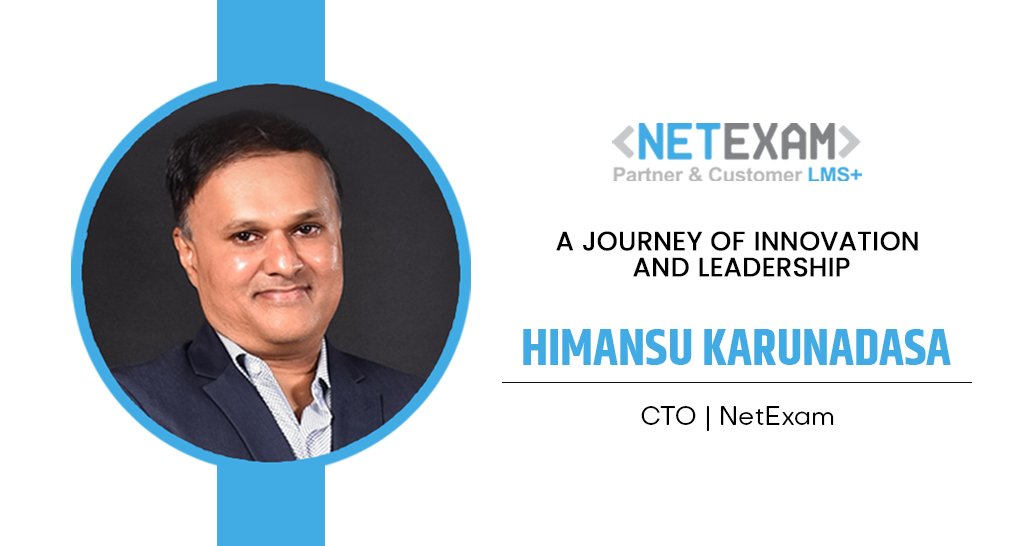In today’s fast-paced tech landscape, the role of a Chief Technology Officer (CTO) has never been more vital. With the responsibility of shaping technology strategies that can make or break an organization, a successful CTO must possess a unique blend of technical expertise, strategic vision, and strong leadership skills. We had the privilege of speaking with
The Path Less Taken
Himansu’s journey began with a graduate degree in Applied Mathematics, a field he initially envisioned would lead him to a career in academia. “I always had a passion for mathematics,” he explains. “But as I delved deeper into the subject, I realized I wanted to apply these concepts to real-world challenges.” This epiphany led him to transition into the software industry, where he could leverage his mathematical background to solve complex technological problems.
Throughout his career, Himansu has co-founded multiple companies and held the position of CTO in various organizations. Each role has contributed to his understanding of the intricacies of technology development, especially in designing scalable architectures and innovative software solutions. “My background in mathematics has been instrumental,” he notes. “It shapes my approach to technology and problem-solving.”
The Allure of Technology
What drew Himansu to the technology sector? “The allure of technology lies in its potential to transform ideas into impactful solutions,” he says. With a strong foundation in mathematics, he was naturally drawn to the analytical and problem-solving aspects of software development. As he reflects on his career, it’s clear that his passion for technology has been a driving force.
But what keeps him motivated in this ever-evolving field? “Continuous evolution is what excites me,” he shares. “New challenges, emerging technologies, and the chance to pioneer innovations that can redefine industries keep my enthusiasm alive.”
Leading with Vision
As the CTO and co-founder of NetExam, Himansu is responsible for setting the strategic vision for the company’s technology. His primary focus is on leading product management, development, and ensuring that their technology infrastructure remains robust and scalable. “A key part of my role is mentoring and growing our engineering team,” he explains. “I believe in fostering innovation and ensuring that our technical strategy aligns with our business objectives.”
In today’s competitive environment, balancing innovation with the practical demands of maintaining current technology infrastructure is essential. “It requires a strategic approach,” he says. “I prioritize building flexible, scalable, and modular architectures that can adapt to new innovations without a complete overhaul.” This mindset empowers his teams to explore new ideas while ensuring that existing systems remain reliable and efficient.
Insights into Technology Strategy
At NetExam, the focus is on delivering scalable, cloud-based Learning Management Systems (LMS) and automation tools that cater to a global audience. “Right now, we’re heavily investing in Generative AI,” he reveals. “Over the past 18 months, we’ve successfully integrated it into our platform, significantly enhancing our offerings.” By leveraging Generative AI, NetExam aims to drive innovation and provide advanced solutions that meet the evolving needs of its customers.
Looking ahead, Himansu envisions that the future of technology in the LMS industry will be profoundly influenced by Generative AI. “We’re already seeing significant impacts in areas like content creation, personalized learning paths, and adaptive testing,” he explains. “I anticipate innovations like dynamic scenario generation for training and hyper-personalized context-aware learning.”
Navigating Challenges
As a CTO, one of the most significant challenges Himansu faced was scaling technology solutions to meet the needs of global enterprises while ensuring performance and reliability across diverse regions. “With a significant customer base in places like mainland China, we encountered unique challenges due to varying infrastructure and network access limitations,” he recalls.
To address these issues, he led the development of a global architecture that incorporated multiple cloud computing providers. “This approach ensured seamless synchronization across all regions and accounted for low-bandwidth environments,” he explains. Overcoming these challenges required innovative problem-solving and strategic planning, which he describes as one of the most rewarding aspects of his role.
The Pressure of Decision-Making
Making critical technology decisions that impact the entire organization comes with immense pressure. “I rely on thorough analysis, consultation with key stakeholders, and data-driven insights,” he shares. Transparent decision-making processes are essential, allowing potential risks and benefits to be clearly communicated. “This way, we can make informed and strategic choices that align with our organizational goals.”
Leading a technology team also involves nurturing a collaborative environment. “I foster a culture of teamwork, continuous learning, and accountability,” he explains. He emphasizes the importance of open communication, ensuring that every team member feels empowered to contribute and take initiative. When building his team, he looks for individuals who are technically proficient and possess a passion for innovation.
Fostering a Culture of Learning
To promote a culture of collaboration and continuous learning within his department, Himansu provides ample opportunities for professional development. “We offer training, workshops, and access to the latest industry resources,” he says. Cross-functional projects are encouraged, allowing team members to learn from one another and share their expertise. “We also support passion projects when time allows, fostering an environment of creativity and shared learning,” he adds.
Ethical Considerations in Technology
In an era where data privacy and security are paramount, addressing ethical considerations is a top priority for Himansu. “We adhere to strict compliance standards and implement robust security protocols,” he emphasizes. Data privacy is designed into their systems by default, with rigorous training for teams to follow these standards. “It’s crucial that our technology supports our business objectives while respecting the rights and trust of our users,” he asserts.
The Role of CTOs in Society
The societal impact of technology is profound, influencing how we work and connect. “As CTOs, we have a responsibility to consider the broader implications of our innovations,” he states. This includes the ethical, social, and environmental impacts of technology. Himansu advocates for sustainable practices, such as designing energy-efficient systems and supporting renewable resources. “By aligning business goals with environmental stewardship, we can ensure technology remains a positive force for society,” he asserts.
Celebrating Achievements
Reflecting on his career, Himansu cites the development and scaling of NetExam as one of his most rewarding achievements. “We’ve been recognized as the best Channel/Partner LMS by industry analysts for five consecutive years,” he beams. Leading the design and development of a platform that serves major global enterprises is a testament to the hard work and innovation of his team.
Staying Ahead of the Curve
To stay current with technological advancements, Himansu engages with academic research, industry publications, and conferences. Connecting with other technology leaders is also essential for exchanging ideas and gaining diverse perspectives. Within his organization, he promotes a collaborative environment where team members regularly share insights on emerging trends. “This collective effort ensures we stay informed and adaptable,” he explains.
Goals for the Future
In the short term, Himansu aims to refine existing products and explore new market opportunities leveraging emerging technologies. “My commitment is to enhance our offerings to meet the evolving needs of our customers,” he notes. Long-term, he envisions driving the evolution of technology platforms to set new standards in the LMS industry and developing new product lines to maintain the company’s position as a leader in innovative learning solutions.
Advice for Aspiring CTOs
For those aspiring to become CTOs, Himansu’s advice is straightforward: “Build a strong foundation in both technical skills and business acumen. Understand your industry and how different functions work across your company.” He stresses the importance of leadership, strategic thinking, and communication skills. “Cultivate a passion for innovation and a commitment to leveraging technology to solve meaningful problems,” he concludes.
As our conversation wraps up, it’s clear that Himansu Karunadasa’s journey is a remarkable blend of passion, innovation, and leadership. His insights and experiences provide valuable lessons for aspiring tech leaders, showcasing the transformative potential of technology when guided by a strong vision and ethical principles. In an ever-evolving industry, his commitment to continuous learning and innovation positions him—and NetExam—at the forefront of the technological revolution.



